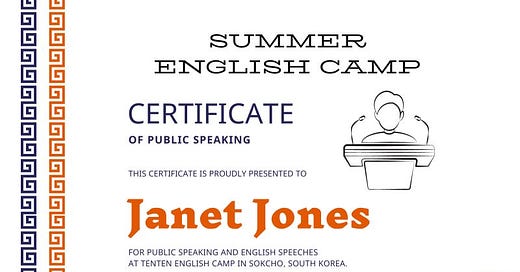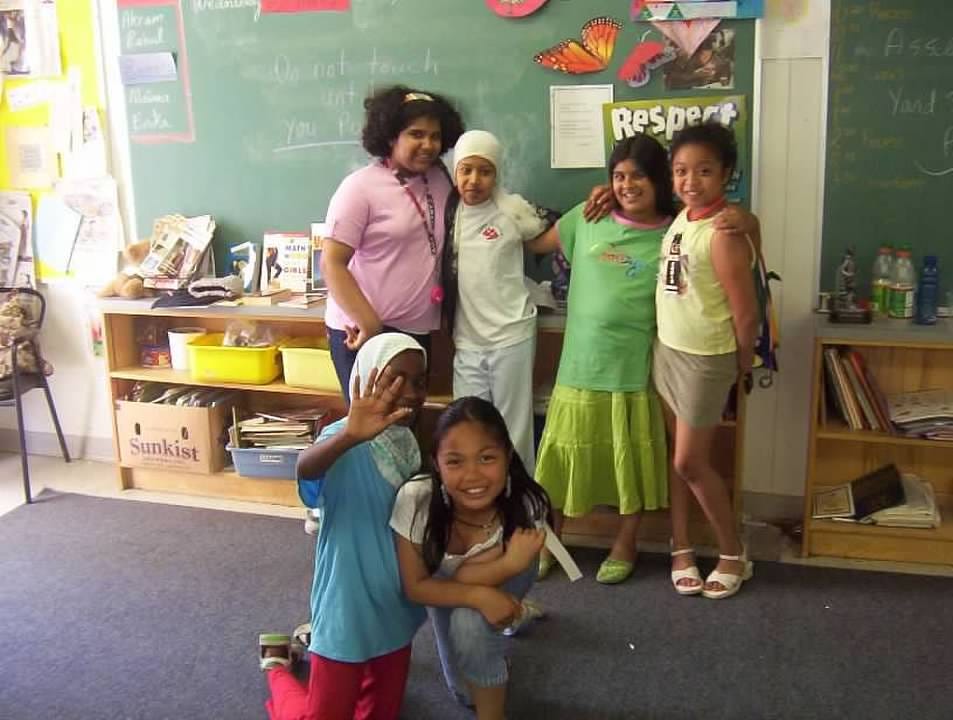Making Learning Visible
Learning a language is an invisible act. You don't see what you build. But us teachers can use some workarounds.
I just finished teaching young enthusiastic tweens for a few months. I taught a course in public speaking, it’s a great skill for young learners to conquer and every student achieved a level of success and improvement.
I used my own book, there just wasn’t anything available that was a low enough level and which would allow for a minimum amount of time writing and the majority of time focused on actual speaking and speech delivery. In the book, find the rubric which I used to assess each student’s speech.
Every Friday, the students were filmed and gave the speech they practiced the most during the week to a live audience. It was uplifting and all students worked to improve.
At the end of the course, I was reminded of something I’ve always thought us teachers needed to do more in our teaching - make learning visible.
Learning a language is a very invisible thing. You don’t visibly see your progress, what you build. If you were a bricklayer, you’d see the building going up. And a few years later, you could return and say, “Hey, I built that!”. Not so with education and especially language. But us sly teachers can provide workarounds, make the learning visible for students and thus, provide super-charged motivation.
How? Well one way I did it was with the videos. Students could see from first one to last, their improvement over time, over the course. Lastly, I provided at the end a celebration and each student was given a certificate (a pysical / visible thing which represents their learning).
I was reminded of my years teaching Grade 4, Rose Avenue P.S. in Toronto. I had the portable farthest from the school, a forgotten edifice where they sent me all the students the other teachers didn’t seemingly want. One day I had a brainstorm - I brought a couple of shoeboxes to class, each full of medals that I’d won over the years running, competing. During class, when students achieved a goal, did something well, mastered something - I’d stop class and we’d have a medal ceremony. Music and all, just like the Olympics.
It developed into something special - different types of medals for different achievements. The heavier medals were temporarily worn with pride, even around the school when students were awarded them.
So, in a nutshell, I’m saying, if you are teaching find a way to make the learning visible, concrete. Especially for young learners but it is needed for all ages of students.
Let me end by mentioning a few more ways besides rewards or making videos, to make learning visible!
[Interested in certificate templates, we have many in our Lesson Library]
TTT - Test. Teach. Test. Language is a skill like playing the piano or doing taekwondo. Test students on a skill. Next, practice it. Finally (and there can be a significant delay, you want to measure long term skill retention), give the same test. Students will visibly see their progress!
Meta-cognitive strategies. Students need to experience thinking about their own learning and seeing the changes with their own eyes. When students start correcting themselves, they start seeing their own improvement. But there are many more meta-cognitive strategies besides error correction. Edutopia has many articles outlining these. I have a nice infograpic with some suggestions.
Tracking charts. Students should record what they learn in some form. It can be as simple as a wall poster with magnets. Or in the back of their book. Focus on a skill or set of vocabulary to be mastered. Record it. See it grow. It will help students and motivate them. It works for reading too but just be careful to focus on the journey, not the numbers.
Learning Journals. End the teaching day by getting students to tell you one thing they learned. It can be as simple as that or have them record their learning in a journal. “Today, I got better at ….” Check our our journal lesson materials. This Learning Log is nice.
Review. A VERY neglected part of classroom teaching and one thing I wish was done more often despite our busy, hurry, hurry classrooms! Take time to slow down, review with students and let them “see” what they’ve learned through review of the course content. Think “re” - revision, repetition, reviewing, redoing …
Let us know if you have some of your own ways to make learning visible!








